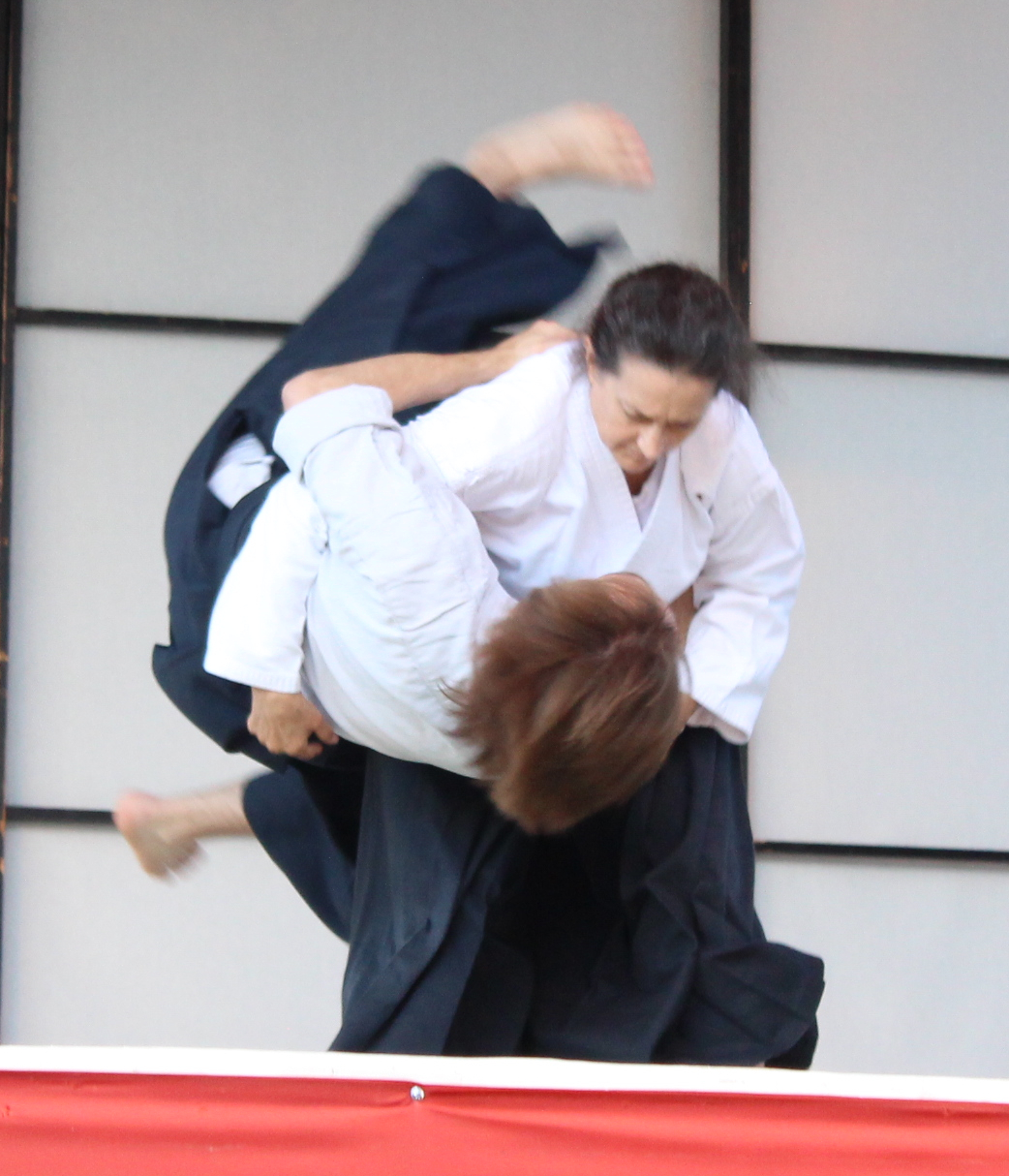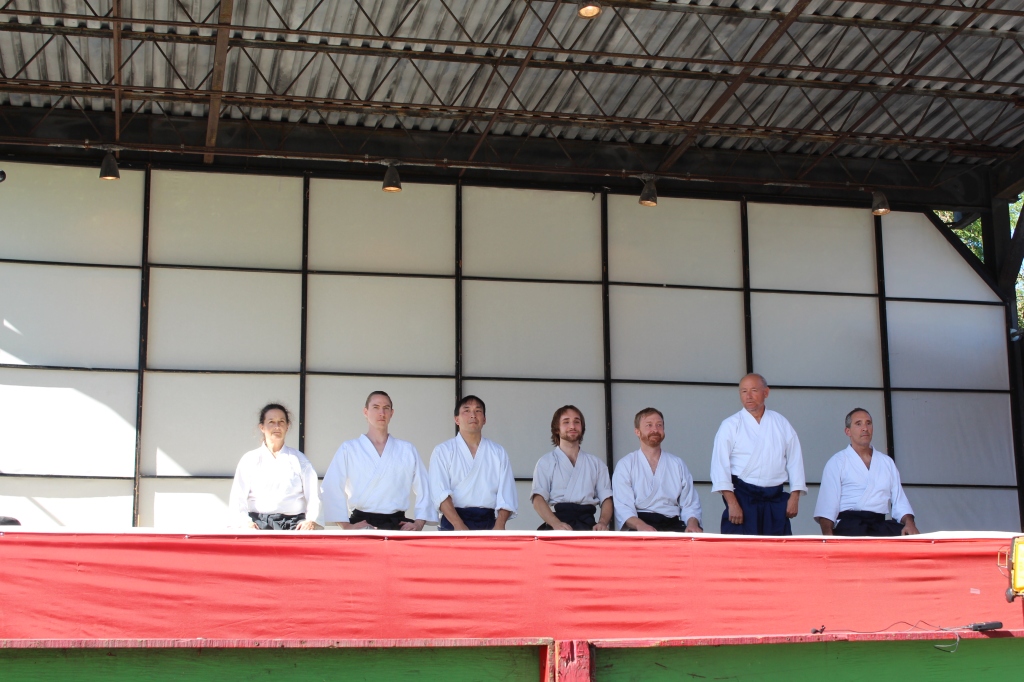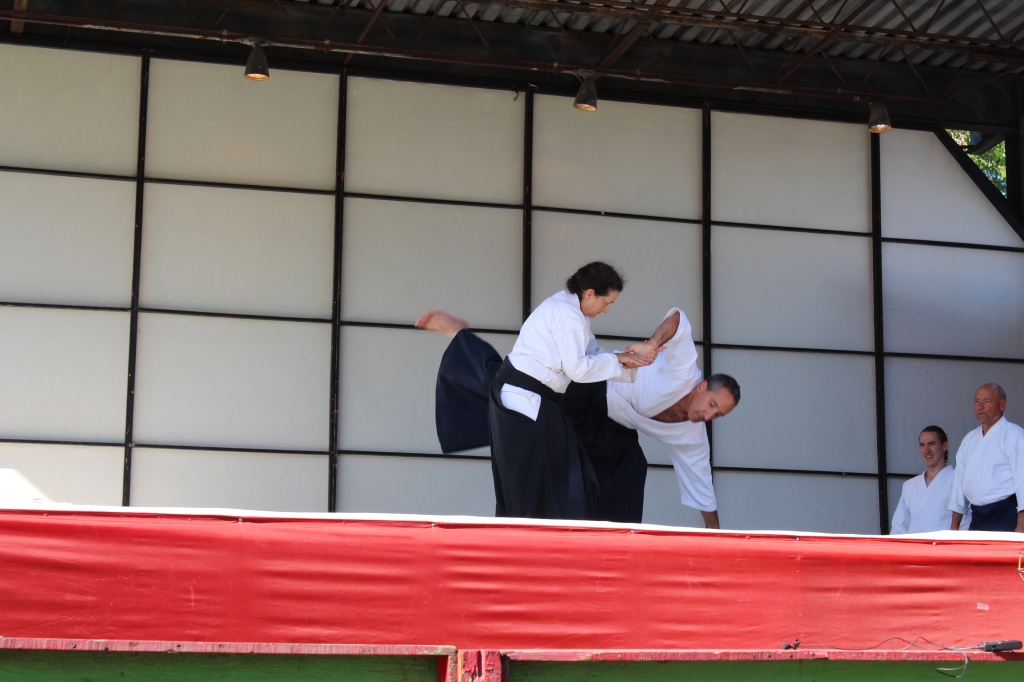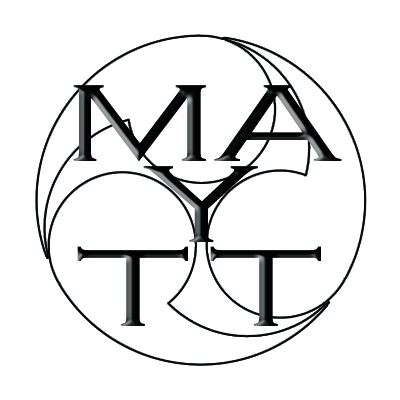Marsha Turner began aikido in 1986 under Kevin Choate after experiencing ballet, gymnastics, and foil fencing. Her reasons for trying and for her continued stay changed and evolved over the course of her tenure in aikido. She currently heads Chicago Aikikai and took some time today to discuss her early years of training, the late Kevin Choate, and the importance of weapons work in aikido. Special thanks to Dwight Sora for acting as mediator and for providing the images for this interview. Images provided by Dwight Sora; images taken by Lexie Wiley.
Martial Arts of Yesterday, Today, and Tomorrow: Welcome Turner Sensei and thank you for joining us today!
Marsha Turner: Thank you for having me!
MAYTT: You began aikido in 1986 under Kevin Choate after experiencing gymnastics, ballet, and foil fencing. What was it about aikido that made you want to first try it and then stay with it for more than three decades?

MT: At the time I first encountered aikido, I was part of the women’s fencing club at the University of Chicago. A friend was practicing aikido and we decided to trade classes. I had always wanted to try out a martial art and aikido, with its movement and weapons work, nicely incorporated everything I had experience with.
Why did I stay? Well, I’ve always said that the reasons I started were different from the reasons that I stayed. And the reasons I was training five years later were different from the reasons five years after that. That continues through today. There is such depth and breadth to this art that there are always new things to learn, and fresh nuances to explore. Every time I think I have a handle on something, I realize I need to break my understanding down and rebuild it from a new perspective. Being in a constant state of inquiry and refinement keeps things interesting.
MAYTT: How would you describe the training you first experienced when began? In what ways has aikido training changed or evolved since then?
MT: There was no talking on the mat – at all. The instructor did not explain anything – did not even name the techniques. He demonstrated, and you were expected to observe and do. After class, the senior students would explain things, if you asked. But in class, no. Since that was the same environment for my ballet classes, this was not alien, but it could be overwhelming at times, especially at the beginning. We learned quickly, though, so it was effective.
Training can be as hard and challenging as you like it. People who are willing and able to put in sustained effort over time are going to get better faster. That’s the same with everything. What is different now is that few people can put in more than two to three days per week. Our students range greatly in age and responsibilities. They have demanding jobs. They have families. They have lives that don’t involve aikido. We want these people to be interested and engaged, training when they can and, of course, supporting the dojo. So, the expectations of what being a dedicated student means have evolved.
I think the people who train now come from much more disparate backgrounds, and there are many who have never attempted a physical activity before. So, the instruction has had to be adapted to how this much more diverse group of students needs to receive information for them to learn. Aikido is the same; how we teach it has evolved.
MAYTT: That is interesting. At the time you began your aikido training, how did the American public view martial arts? Was there a certain mystique to the empty hand arts that they lost as time went on?
MT: You know, I don’t know. I only know what I thought. I did not perceive any particular mystique, either in the beginning or now. It was another art that had technical and artistic features that could be learned over time if you applied yourself. It appeared to me to be a discipline the content for which had to be accessed on multiple levels concurrently: you had to process visual information (what you thought you saw), aural information (what you thought you heard), tactile information (what you felt when you interacted physically with a partner or fell onto the mat) and kinesthetic information (what you perceived when you moved). And then amalgamate all of that, which increased the complexity of the study and, frankly, is what, to me, made it so interesting. There have always been subtleties and nuances that have become more apparent with experience. That I continue to encounter more subtlety and greater nuance keeps things challenging.
MAYTT: In speaking with previous women aikidoka, many have mentioned a difference in experiences compared to that of their male counterparts. From a woman’s perspective, what has been your experience as an aikido practitioner?
MT: Interesting question! Well, as I mentioned earlier, you’ll get better if you put in sustained effort over time. Irrespective of gender. If you want to learn anything, you must work at it and, especially, work through the tough parts and keep going even if you don’t want to because you’ve hit a plateau or because you’re just not getting it. You do it anyway, because at some level, you’re processing what you’re learning and that will pay off. Frustration is part of learning, part of trying. I certainly haven’t hit any barriers because I’m a woman. None I’ve been aware of, anyway.

Two things have jumped out at me over time, however. First is the way boys and girls learn to play and interact physically. In general (I’m overgeneralizing), boys play more physically interactive games than girls do. I have found that when people get into an environment such as aikido where they must grab, punch, and throw and be grabbed, punched and thrown, those who have grown up interacting more physically are just more comfortable earlier with the physicality of aikido. Those people often, but not always, are guys. However, and here’s the second thing, since women have a lower center of gravity and usually don’t have the muscle to force technique, they learn to use peoples’ momentum and weight to their advantage. This means they can access much sooner a level of insightful training which often takes the stronger, larger and more muscle-dependent guys significantly longer to get to.
MAYTT: How important do you feel weapons work is in aikido? How does aikido’s weapons work compare to that of your previous experience with foil fencing?
MT: Super important. Dwight Sora expresses this very eloquently, I believe. Much better than I do! [Laughs] There is a strong relationship between weapons work and empty hand, and I enjoy classes which explore this both explicitly and implicitly.
There is a lot of bokken work which I have found relates directly to what I learned in fencing; you are just holding the weapon with two hands instead of one. I still use some fencing exercises in my basic weapons classes, adapted for sword. That said, weapons in aikido are completely different from what I used in fencing: we have bokken (sword), jo (staff), tanto (knife) and some people do two-sword (long sword & short sword) work as well. I enjoy each of these because of how different they are and because of how they complement and add to my aikido training.
MAYTT: I see. What were your first impressions of Choate? What was he like as an instructor?
MT: He was intense. Dedicated. Focused. Very driven. He was one hundred percent intent on training and on solid basic technique. He was demanding and had high expectations. And he was good at drawing our best efforts to improve. Over time, his aikido became much more subtle, and you could see his breadth and depth of knowledge expand. He had a significant impact on everyone who trained with him.
Also, he was an artist. Not only in his study of aikido and his constant efforts to better himself and his knowledge base. He was an amazing designer, as is evidenced by the beauty of our different dojo locations. The students helped with the work, of course, but the vision and concepts were his.
MAYTT: What was Choate’s background before joining aikido?
MT: He began training when he was twenty-two. His brother wanted to take classes and didn’t want to go alone, so Choate Sensei went with him. His brother left and he stayed.
MAYTT: Choate took over dojo operations and leadership in 1981 and over the years, became a staple among Aikido Schools of Ueshiba’s leading instructors. In your opinion, what do you feel is the lasting legacy of Choate in the Midwest and in aikido?
MT: For me, the true impact is having observed the results of Choate Sensei’s dedication and effort over time. He worked hard, and he tried things out, he succeeded, he failed, he refined, he explored, he doubled down, and he let go. He studied. He read, he trained, and he learned. He evolved. And he never, ever, stopped.
MAYTT: Chicago Aikikai’s beginnings has many connections to the early pioneers of aikido in the Midwest, from Isao Takahashi to Robert “Red” Sakamoto to Akira Tohei. How do you think these influences shaped the culture and character of the dojo?
MT: I think all these excellent aikidoka have made significant contributions to what the dojo is today. By shaping the past, they have made the present. By teaching those of us who are teaching today, they have put their imprint on the dojo in a manner that is ever lasting. Even if only a few of today’s students know who these people may have been.
MAYTT: I understand. Besides Choate, who would you consider to be influential or instrumental in spreading and solidifying aikido in the Midwest? What sets these individuals apart from their peers and contemporaries?
MT: So many people! There are Mitsugi Saotome Sensei, who founded the Aikido Schools of Ueshiba, and his senior student Shigeru Suzuki Sensei, who were Choate Sensei’s teachers and each of whom taught at our dojo in the 1970s and 1980s. Looking across organizations, there are Fumio Toyoda Sensei (Aikido Association of America) and Akira Tohei Sensei (Midwest Aikido Federation), who both built strong and far-reaching organizations and each of whom spawned many excellent teachers who went on to open their own dojos. Saotome Sensei, Tohei Sensei and Toyoda Sensei are only three of the Shihan whose hard work helped spread the practice of aikido, in the Midwest and beyond. Many of their students have become very well-known and highly respected practitioners. Today in Chicago there are many excellent senior sensei’s who have come from many aikido lineages. Their individual and collective efforts and contributions mean that aikido is very well established and thriving.

MAYTT: Final question; with many of the postwar uchi deshi of Morihei Ueshiba passing on, how do you think aikido will evolve here in America in the next ten years?
MT: Aikido has been evolving since O-Sensei began to explore what he came to call aikido. That’s why there are so many aikido lineages. It has evolved with each uchi deshi and the perspective(s) they have brought to the art. It will continue to evolve through their senior students, and so on, and so on.
The biggest change I have seen in the time I have been training is that more people of varying ages and varying levels of ability are trying it out, for very different reasons. I don’t know if this is a general trend or if it is just what I have encountered.
Back to your question of how will it evolve? I look forward to finding out!
MAYTT: Thank you again for joining us and having this wonderful conversation, Turner Sensei!
MT: It was a great time being here.
Watch the August demonstration at the Ginza Holiday Festival at the Midwest Buddhist Temple here.
To learn more about aikido and its history in America, click here.


